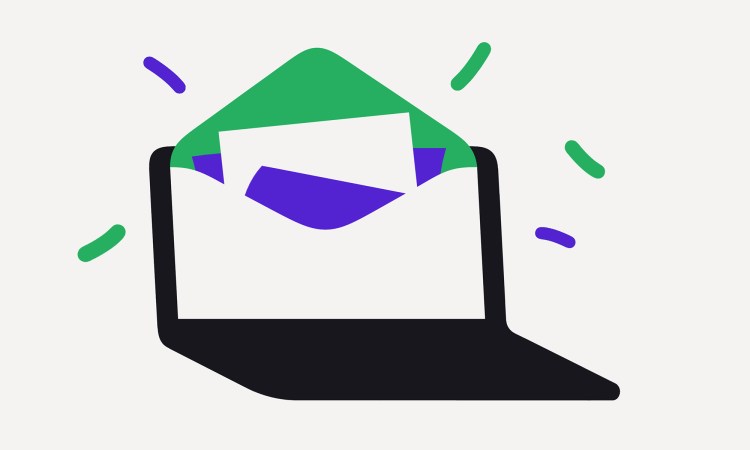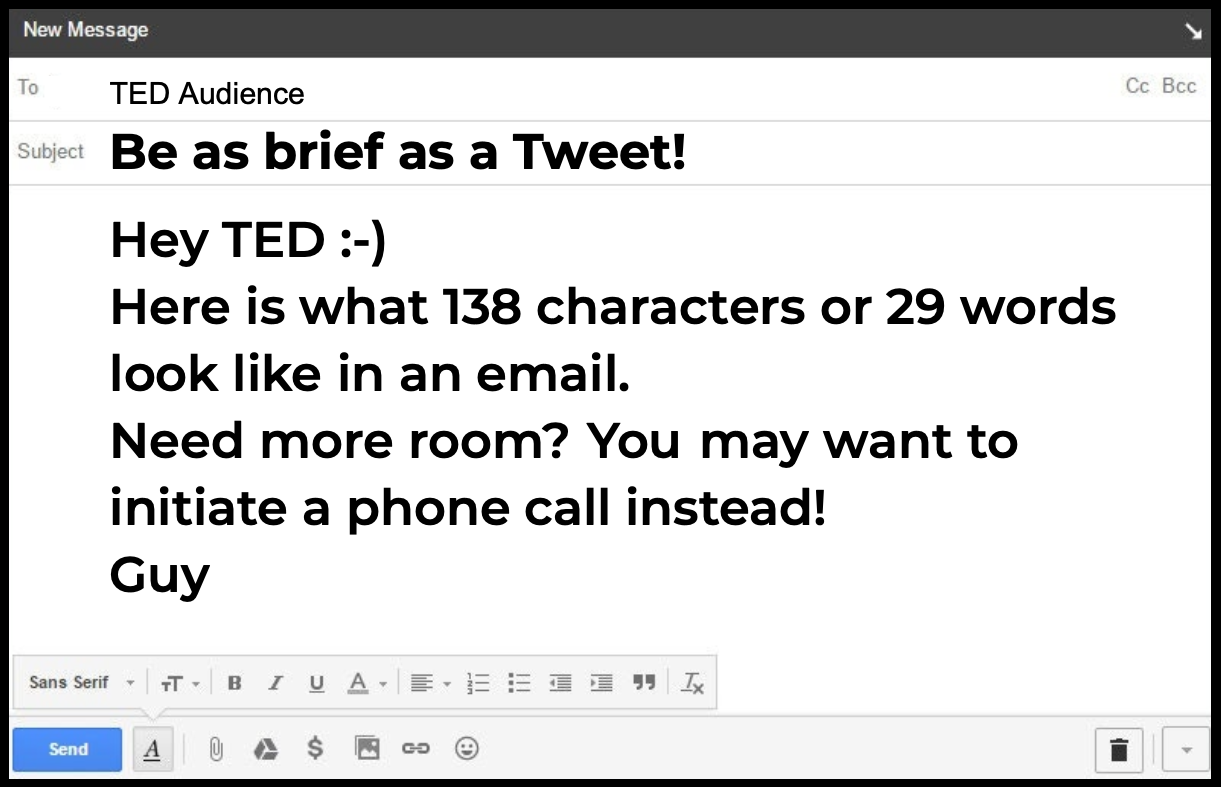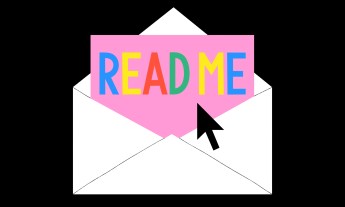
This post is part of TED’s “How to Be a Better Human” series, each of which contains a piece of helpful advice from people in the TED community; browse through all the posts here.
Emails are just as fundamental these days as food and water in our lives, and they form a large part of our daily communications.
Roughly 300 billion are sent around the world every day, according to Statista. On average, each of us who works in an office gets 121 emails per working day on average! Yet we send them and read them without thinking about them for a second.
But emails are essential. In some situations, they can’t be replaced with a short meeting or a phone call. We send them because of traceability or a time difference, or we need to have many people reading the same thing.
A study of around 1 million emails that was done with Microsoft shows the average employee spends 28 percent of his or her day working on emails.
But given how essential emails are, did anyone ever teach you how to write one?
I have dedicated the last 25 years to learning and teaching. I have trained in the Scouts and the Israeli Army, and I teach business at a German university today. Just like anyone else, I send and receive emails and texts. Loads of them. I use them to stay in touch with customers, collaborators and students around the world.
My students and I decided to optimize our emails and test what worked — and what didn’t. We found by tweaking just five little things, you’ll make it more likely that your email gets read, you’ll spend less time working on it, and writing an email might even become fun. Here they are:
1. Make an excellent first impression
A subject line is your chance to make a positive first impression on your recipient. According to existing research, three things make an effective subject line: It should be short, call for action and indicate familiarity with the recipient.
I showed 300 people the following email subject lines and asked them which they’d open first. Can you guess which they chose?
A. Statement 10.31.2020
B. Welcome Message
C. Meeting tomorrow, please respond!
D. Hey! 🙂
E. Missed you, how’s Friday?
If you picked C, you’re right! That was the overwhelming favorite, with 47 percent choosing it. The runner-up was D, with 20 percent of the vote.
2. Add color and feeling to your email
Our emails are written in black and white, so they automatically look kind of boring. Sending your thoughts in email is a bit like speaking without being able to use your body, voice, or face. So how can we put some color and — more importantly — feeling into them?
By using different kinds of punctuation and, yes, emojis.
For example, here’s the same sentence but written three different ways. Which do you find the most engaging?
Dear Guy, thank you for visiting.
Guy, thanks for visiting!
Hey Guy, awesome that you dropped by 🙂
I like to call punctuation and emojis “digital body language,” which we desperately need to show who we are, even if we’re just writing an email.
And if you want to go all in, try adding a GIF.
Here’s one of me!
Should you always add an emoji or a GIF to your work emails? Of course not. Think of digital body language as the spices and seasoning in your email recipe — depending on the culture, setting and background, you may want more or less of that curry or hot sauce. Or none at all.
3. Keep them as brief as a tweet
Research from NYU, MIT, and Boston University shows that many emails aren’t read but just skimmed or simply deleted. And it seems that with every additional word you write beyond your first 40, you directly reduce the chances of getting an answer.
So be as brief as you can. Keep it the length of a tweet, or 280 characters.
Now you may be telling yourself: “No way — my meeting notes [or whatever you’re writing about] can’t be that short.”
And you’re right.
But the one part of that email in which you ask for something or get something done can be kept brief. You can include those meeting notes as an attachment.

4. Use names at critical moments
Imagine if you knew a magic word that you could include in your email, a word that could instantaneously grab the attention of every single person in the world.
Well, it turns out you already know it: It’s the name of the person you’re emailing.
Dale Carnegie once wrote, “A person’s name is to him or her the sweetest and most important sound in any language.” He wrote this almost 100 years ago, but I believe his words still apply today.
We all have a narcissist in us, and if you use a person’s name at critical moments, you will increase your likelihood of getting an answer. For example, when you’re making a crucial request in your email, start with the recipient’s name. What’s more, research shows that mentioning the name of another person whom the recipient knows will also significantly raise the chances your email will be answered.
Just remember: There is one way in which a person’s name can completely ruin your email — if you misspell their name, all the thought you put into your message will go down the drain.
Now I’m sure that some people reading this will say there is no “perfect” email, and they’re right. Every email is different, yet most emails have two things in common: one, you want something from someone, and two, that someone is a human. Because of these two things, my suggested ingredients can surely help.
What matters is the proportion. Now that you have the list of recommended ingredients for an email make sure you use them in the right quantities. From now on, try and break away from writing any important emails on autopilot. Instead, picture the person you’re writing to and season your email to their taste using your ingredients.
5. Tap into the power of the last impression
Here’s one final point. Remember how Steve Jobs always waited until the end of his presentations to show off the coolest of the products he was introducing? He used to say “one more thing”, and boom, there came a new iPhone out of his pocket.
Why not use that tactic too? If you have one important thing to say or one crucial thing you need from your recipient, or one uncomfortable thing to say, try putting it in the P.S. line. This is the last impression, which isn’t as well known as the first impression. But it can be just as powerful as it’s the one thing that sticks with your reader even after the rest is forgotten.
This post was adapted from Guy Katz‘s TEDxZurich Talk. Watch it here:












